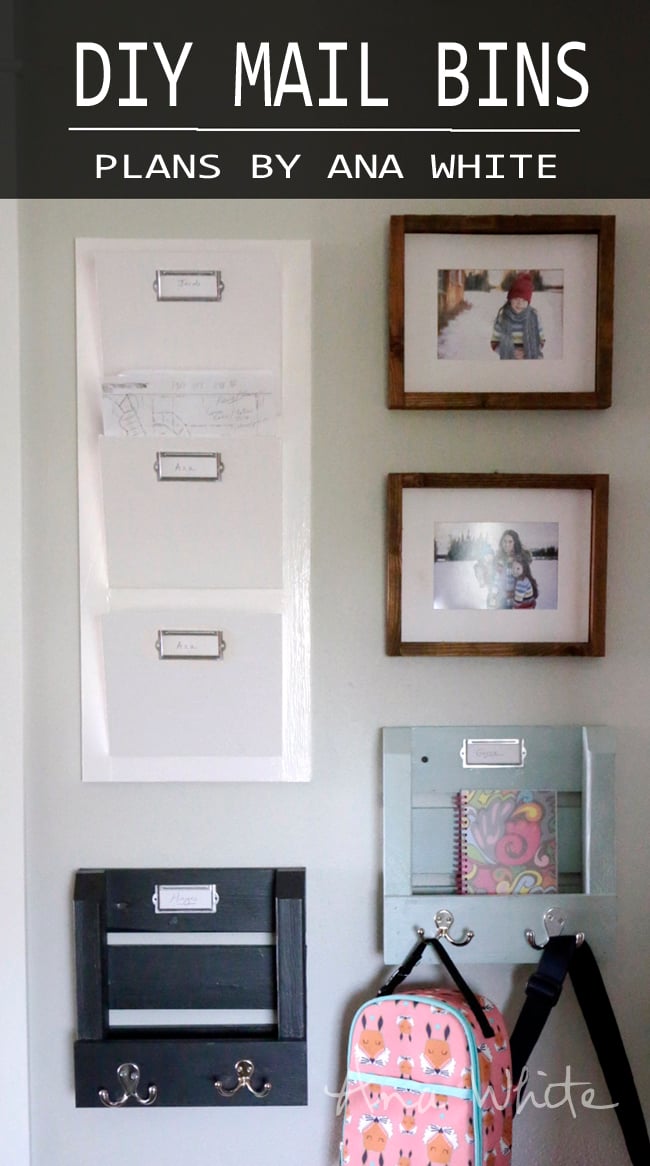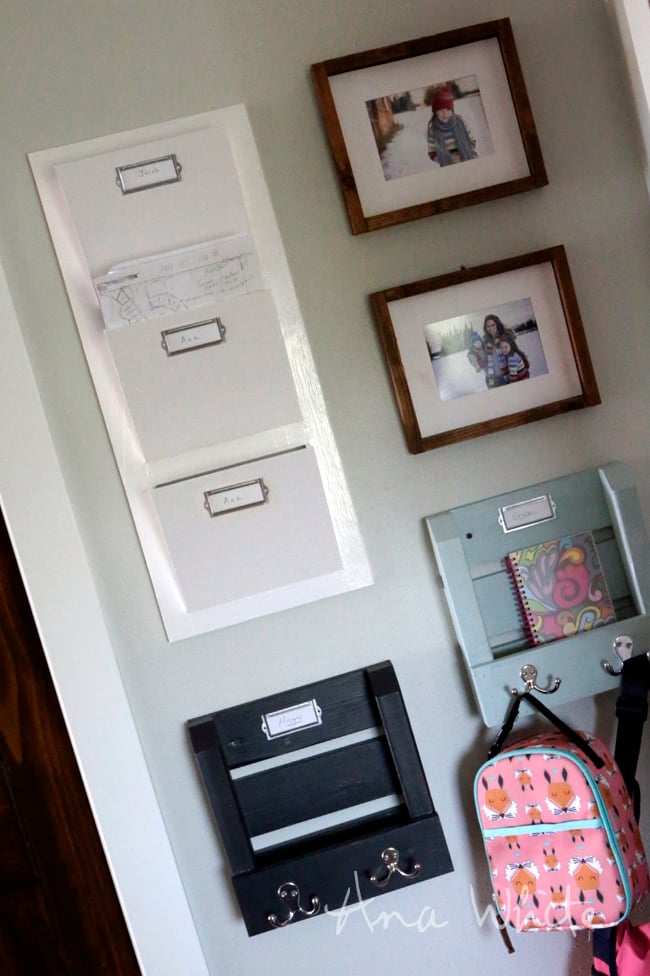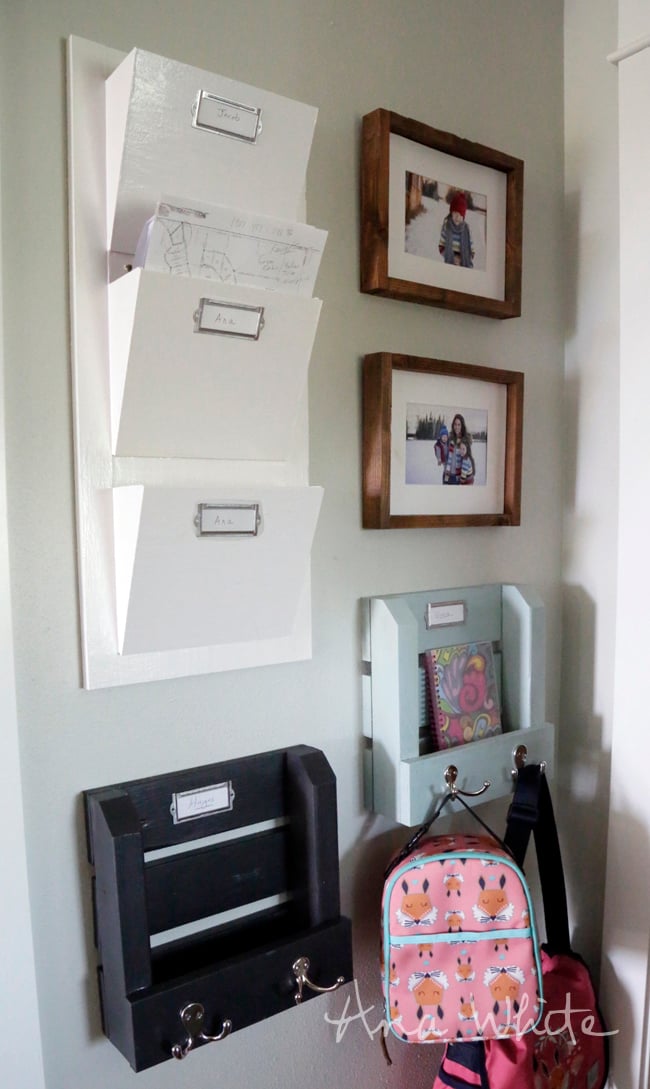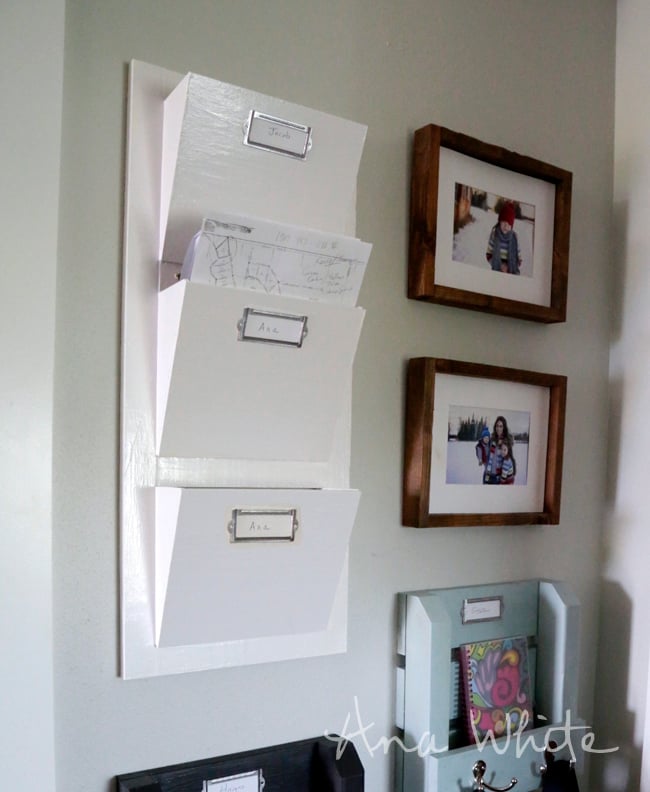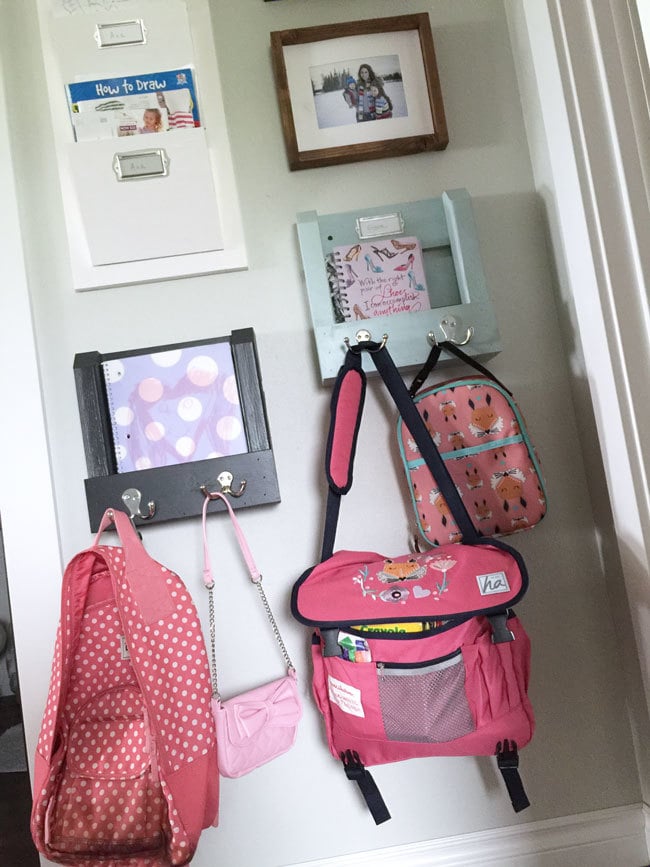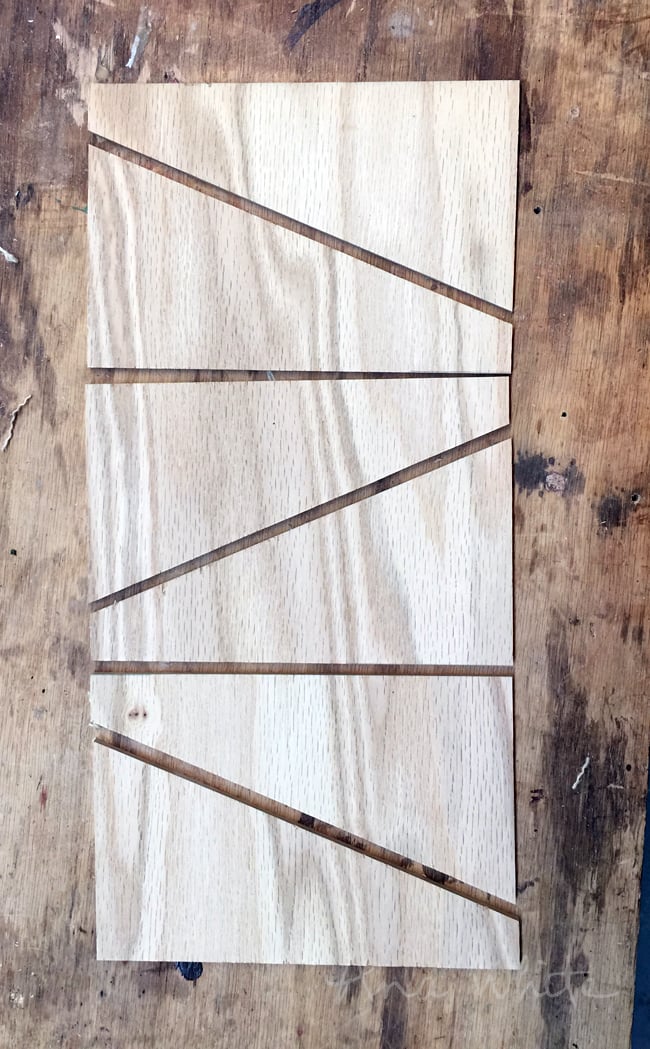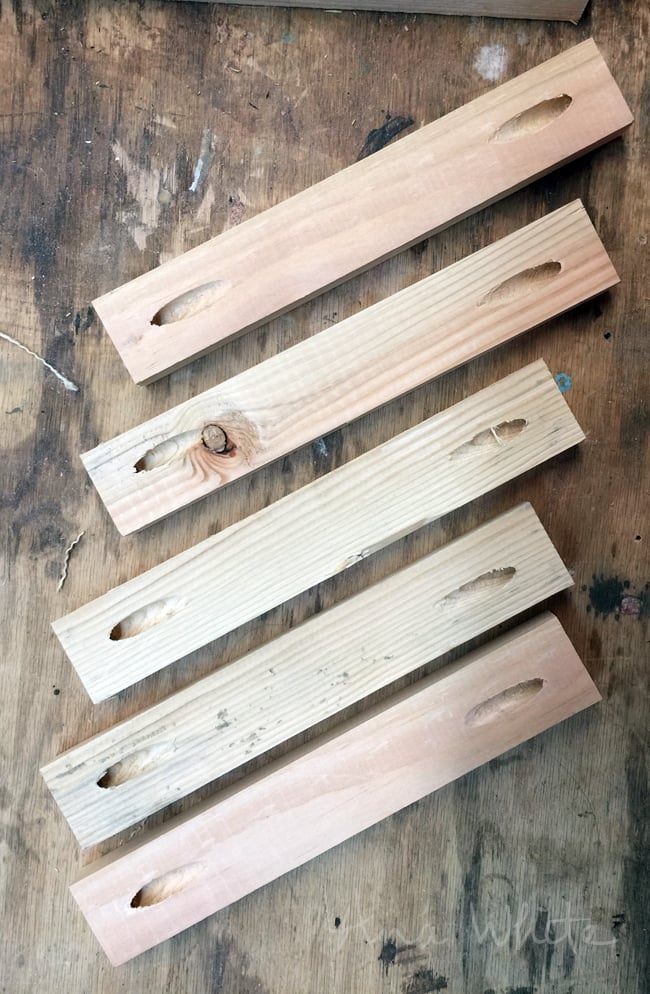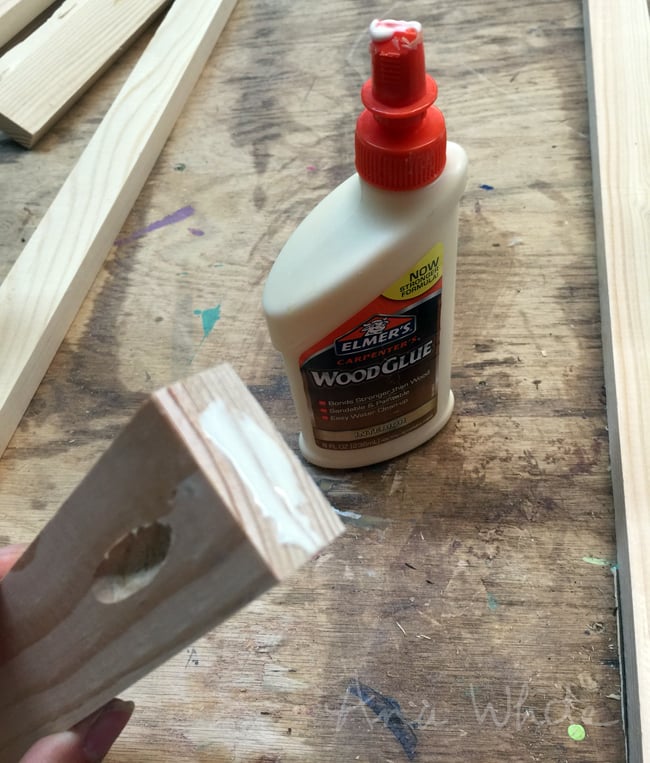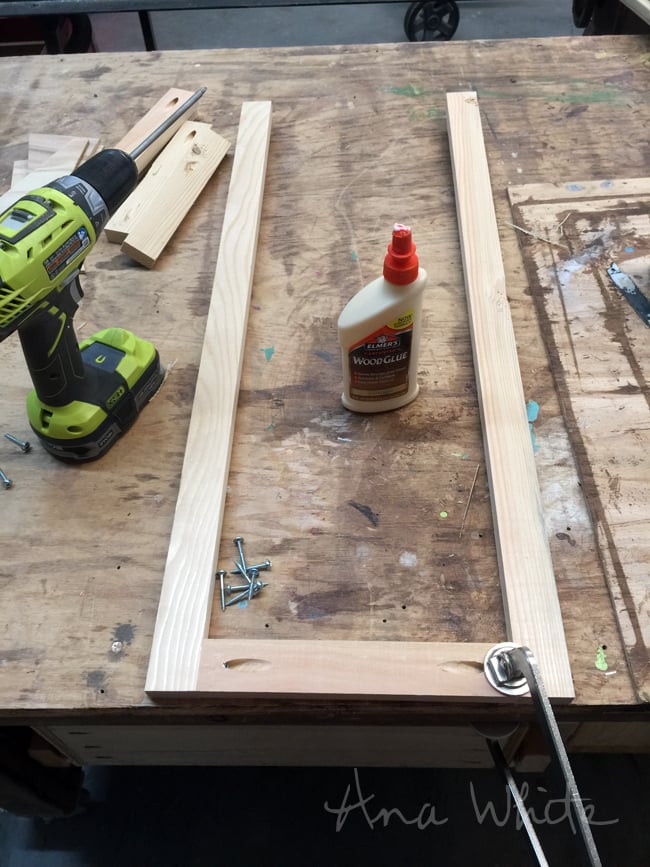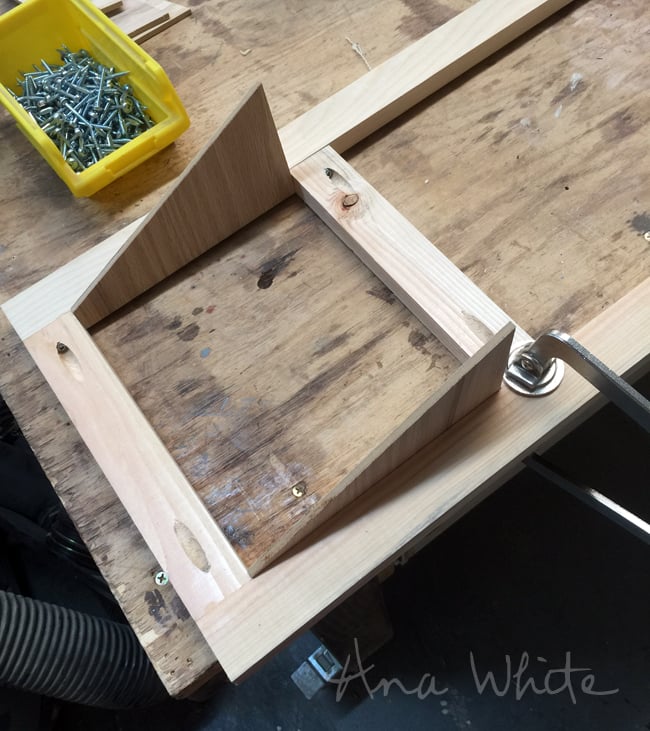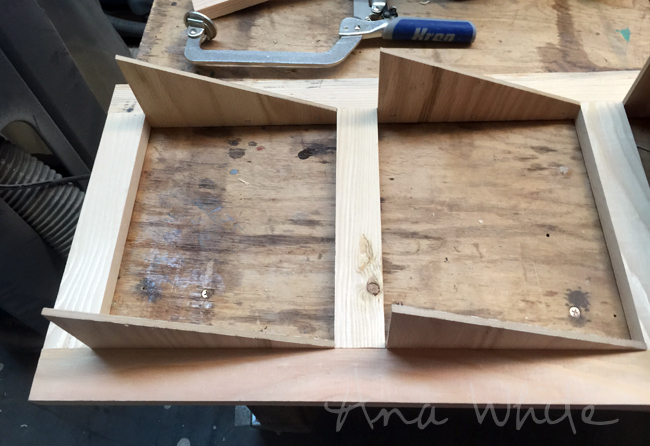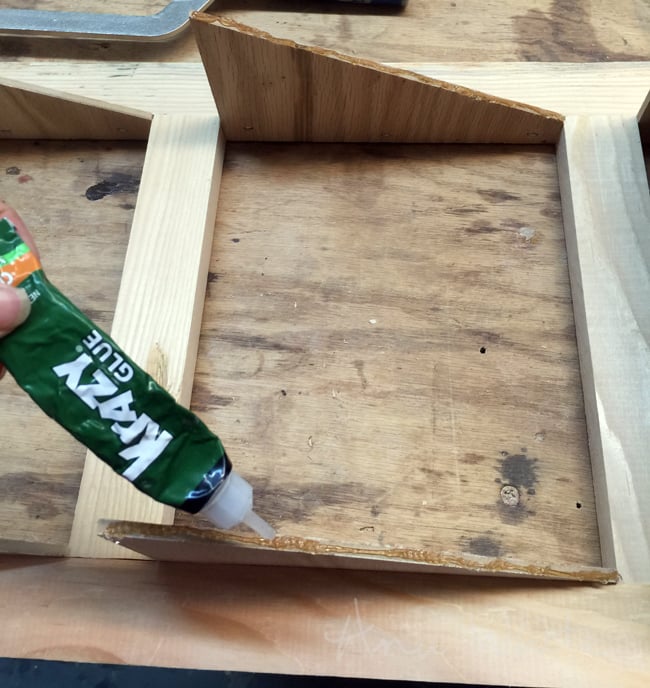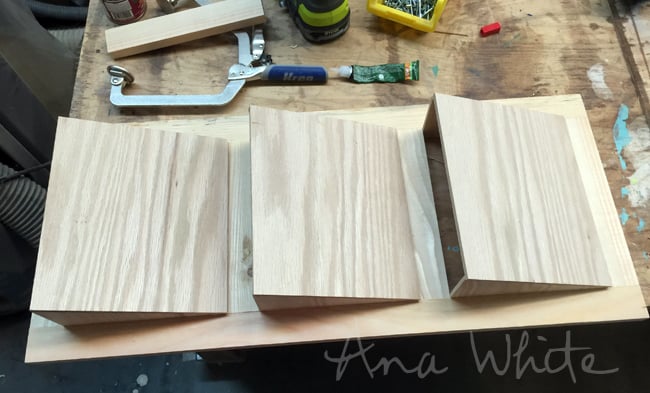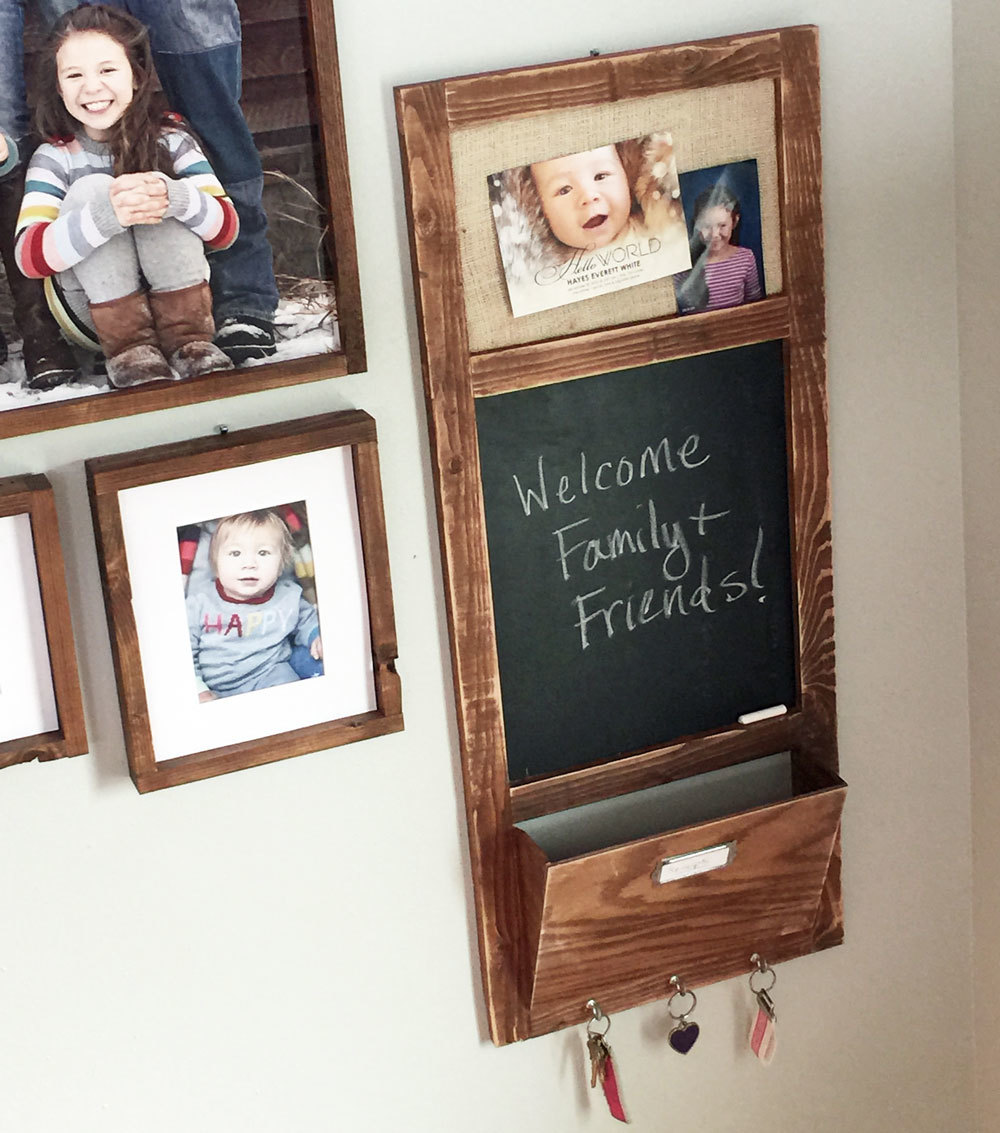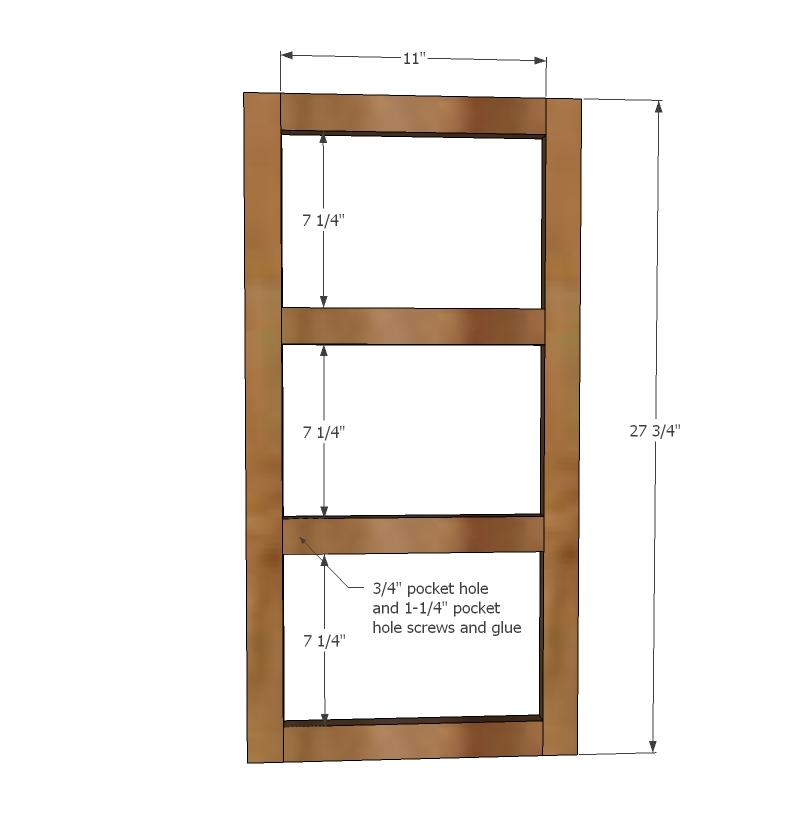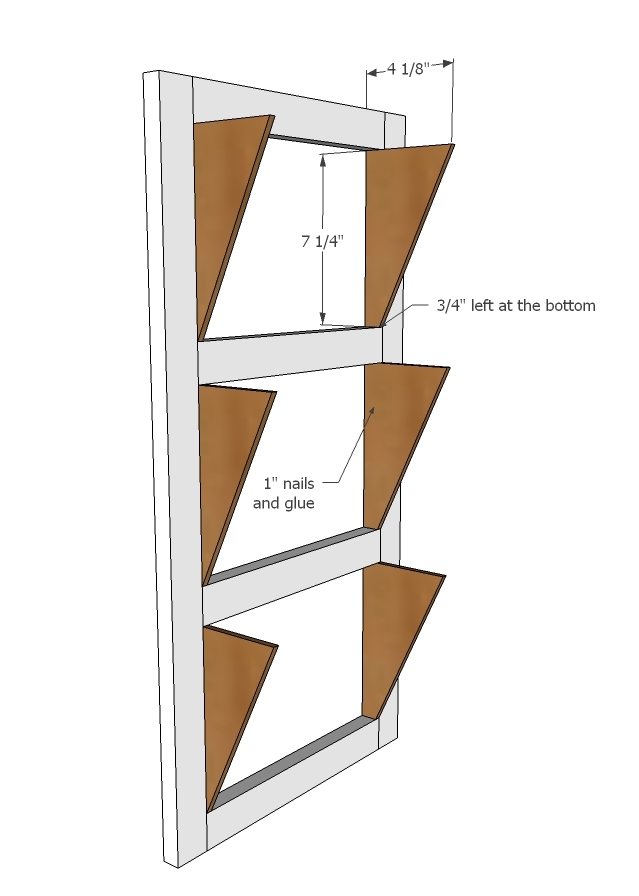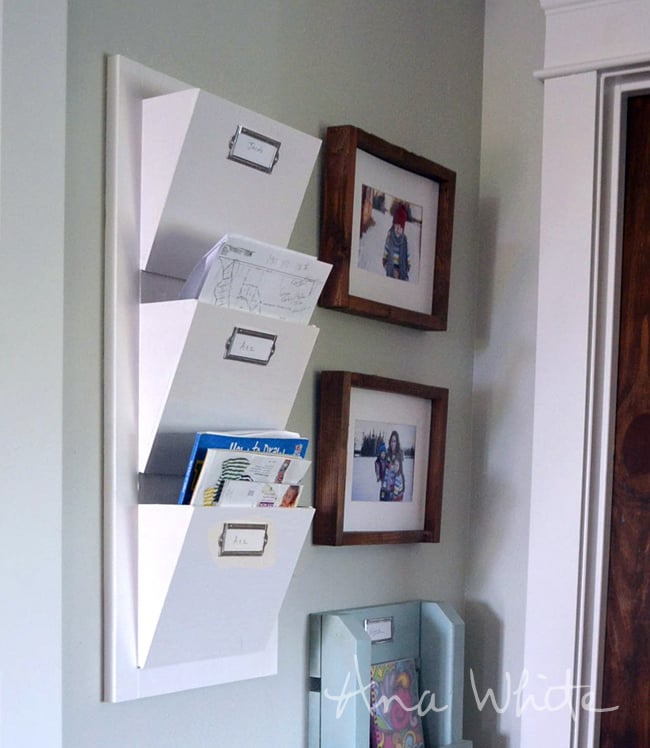
How to build a wall shelf for magazines or mail. Bins are sized perfect for mail. Make out of 1x2s and 1/4" plywood! Super inexpensive and easy to build!
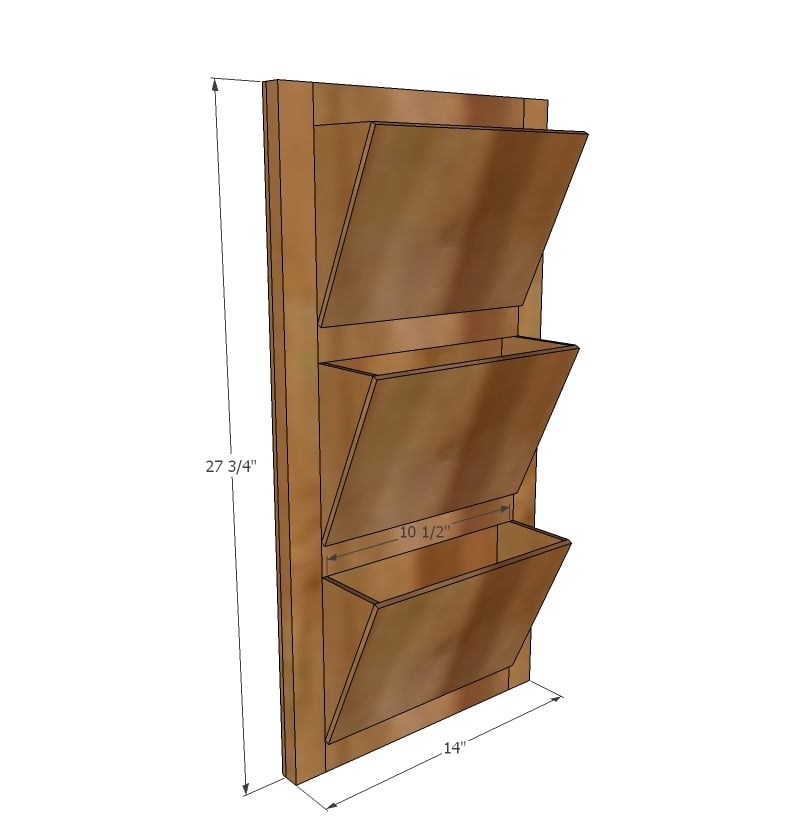
Preparation
1 - 1x2 @ 10 feet long
24"x48" piece of 1/4" plywood, MDF or other hardboard (available off the shelf at the Home Depot in this size)
2 - 1x2 @ 27-3/4"
4 - 1x2 @ 11"
6 - 1/4" plywood @ 7-1/4" x 4-1/8" (cut back to 3/4") (tip: cut a piece of plywood 7-1/4" wide x at least 16" long, then set saw to 25 degree angle and cross cut to size, leaving 3/4" on short end)
3 - 1/4" plywood @ 11" x 8" (tip: Rip into 11" or 8" strip first, then cut into the individual pieces next)
Be careful when cutting small pieces of 1/4" plywood - clamp to saw top for added security
Please read through the entire plan and all comments before beginning this project. It is also advisable to review the Getting Started Section. Take all necessary precautions to build safely and smartly. Work on a clean level surface, free of imperfections or debris. Always use straight boards. Check for square after each step. Always predrill holes before attaching with screws. Use glue with finish nails for a stronger hold. Wipe excess glue off bare wood for stained projects, as dried glue will not take stain. Be safe, have fun, and ask for help if you need it. Good luck!
Instructions
Step 1
Step 2
It is always recommended to apply a test coat on a hidden area or scrap piece to ensure color evenness and adhesion. Use primer or wood conditioner as needed.


